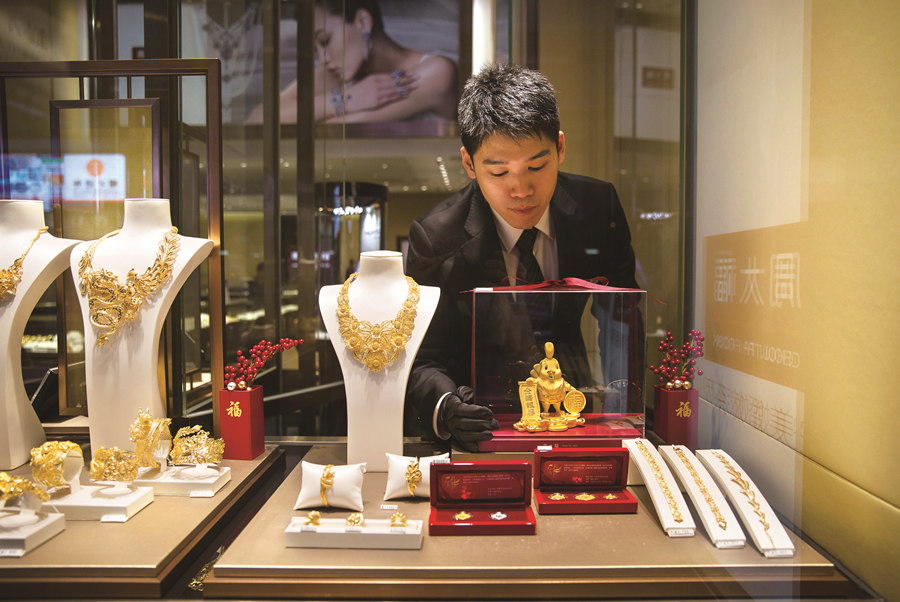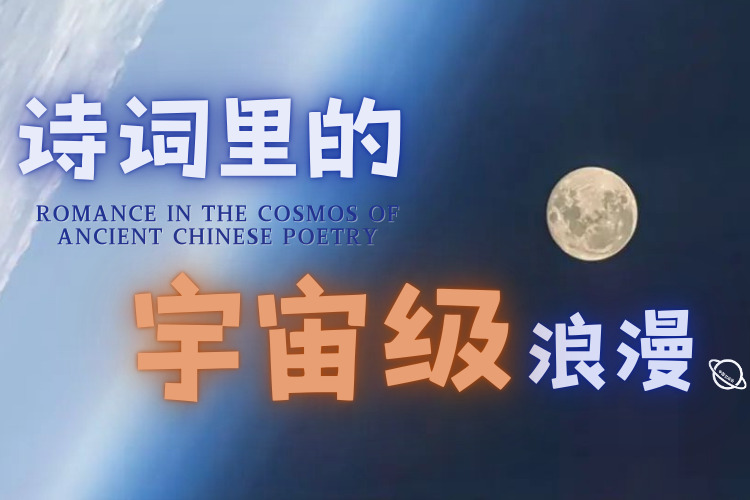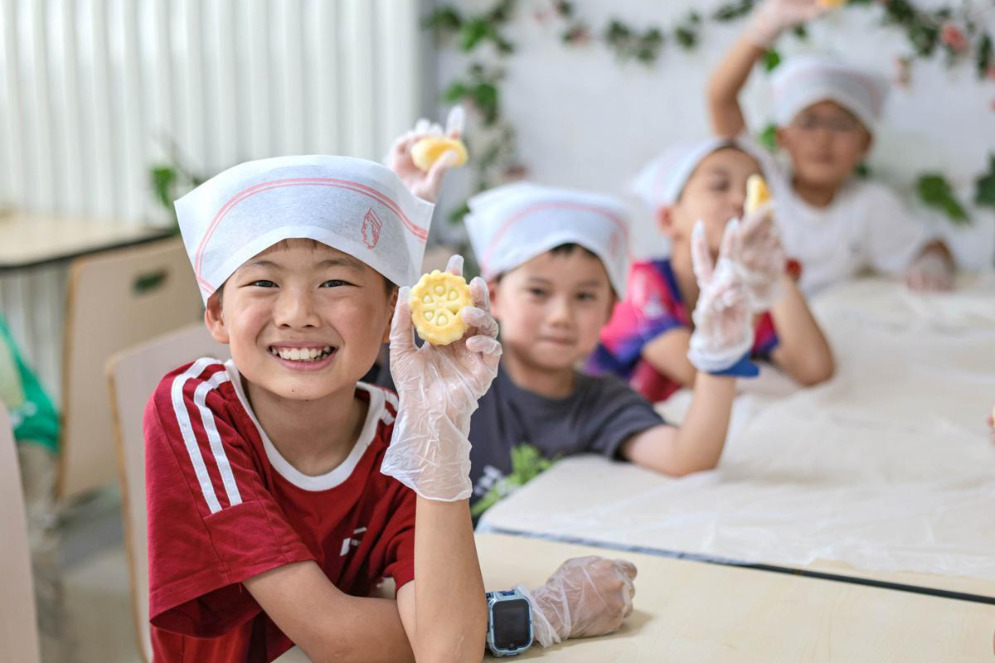Dazzling encounters in a once penurious village


A world of magnificence beckons for Shenzhen's Shuibei locale on reforms
Walking along the bustling streets around Shuibei, one would probably feel he or she's in a world of magnificence, surrounded by gleaming gold necklaces and jade bracelets displayed on the counters of jewelry shops lined up on both sides of the streets, or decked out by people for special occasions.
Inside the shops, ostentatious diamond rings worth hundreds of thousands of yuan are spread out on the counters, dazzling would-be customers. Buyers huddled nearby, meticulously comparing the prices.
Shuibei, located in Shenzhen's Luohu district, seems vastly different from the general public's common impression of the city as a high-tech and innovation hub. It is the country's No 1 gold-and-jewelry manufacturing and sales base.
Every year, approximately 50 percent of the country's gold and jewelry wholesale business originates from Shuibei. The area hosts more than 4,100 enterprises in the industry, generating annual revenues of 112.6 billion yuan (HK$128.4 billion).
It's also home to 21 jewelry-related China Famous Brands, accounting for 37.2 percent of the country's total in the sector. About 78,000 people are working in the area of just 0.1 square kilometers.
Over the past several decades, Shuibei has emerged from an impoverished village to a well-known gathering place for the gold-and-jewelry business, backed by the nation's reform and opening-up policy launched in 1978. The entry of Hong Kong jewelry entrepreneurs into the mainland market chasing the reforms has fueled the industry's growth, leading to the creation of a special industrial enclosure — Shuibei Jewelry Village.
The development of Shenzhen's jewelry business, however, did not start in Shuibei. In the old times, some jewelry entrepreneurs from Hong Kong moved their factories to Shatoujiao — a lesser used boundary crossing between Shenzhen and Hong Kong — taking advantage of its low land and labor costs. It gave way to the rise of the first group of jewelry processing enterprises.
Most of the factory workers came from Guangdong's Chaoshan region, which comprises the cities of Chaozhou, Shantou and Jieyang, plus neighboring Fujian province.
As they made their first pot of gold from Hong Kong employers, many workers started becoming their own bosses and began gathering in Shuibei for the jewelry processing business. They took orders not only from Hong Kong, but also other parts of the country.
"The early days after the mainland's reform and opening-up coincided with the time when Hong Kong was moving its manufacturing industry northward to escape soaring land and labor costs. Shenzhen's jewelry industry was one that benefited from the wave," recalled Zhang Wenyang, deputy secretary-general of the Shenzhen Gold and Jewelry Association.
In the 1990s, there was a severe supply-and-demand imbalance as the country put a lid on gold trading. It was not until 2001 when the government decided to lift the curbs that the sector began its trek to remarkable growth.
The jewelry business expanded rapidly as a greater number of players threw their hats in the ring, eyeing a piece of the pie in the booming industry. By 2003, Shuibei Jewelry Village had become home to more than 300 jewelry-related enterprises, and the number continued to climb at a fast pace.
"In the early stages of development, Shuibei's jewelry business was centered mostly on processing, which was low-skilled and low-profit. Now, many have embarked on the journey of transformation and upgrade, concerned with branding and high-end manufacturing," said Zhang.
Miao Zhiguo has deep feelings about the transformation. He has been leading his company to ride the wave in the fast-changing environment since 2001.
Shuibei Jewelry Village has gone through various periods of development, according to Miao, managing director of Shenzhen Ideal Jewelry Co.
"Back in 2000, the main business in the area was jewelry trade. The local industry relied on wholesales and processing to make a living — many were run by families. In 2005, more and more business people realized the importance of branding and focused on developing their own brands," he said.
"The industry evolved to a higher level in 2010 when it began integrating itself with the financial industry. That progress has greatly propelled the sector's growth."
With the advantage of cross-industry integration through a listing on the Shenzhen Stock Exchange in 2015, Shenzhen Ideal Jewelry Co is trying to apply high-tech to the manufacturing process to enhance efficiency and promote its growth, Miao said.
"Every time we upgrade our system, we're able to improve our efficiency by 20 percent."
Meanwhile, the country's ambitious Belt and Road Initiative has created fresh growth opportunities for Shuibei's jewelry trade.
Although countries involved in the BRI represent the world's main raw material and consumption markets in the jewelry business, their links with the Chinese mainland are not very close, Liang Rui, president of Shuibei Jewelry Group, pointed out.
Among the jewelry imports from other countries, BRI nations only took up 22 percent, while for Chinese jewelry exports, they accounted for merely 1 percent or less.
"This means we have enormous space for cooperation with the Belt and Road countries," Liang said.
However, challenges remain for Shuibei.
"Shuibei jewelry businesses have been taking the lead in design, production and wholesales in the industry supply chain. But, in the most profitable segments, such as branding and retail, they don't get a big share of the cake," Zhang noted.
"At the same time, the relentless increases in Shenzhen's land prices and labor costs may force the jewelry processing business to move to neighboring places like Dongguan and Huizhou, which have a large number of industrial parks, and the local governments are offering preferential policies to attract businesses to settle down there," he said.
"It's important for Shuibei to accelerate the pace of transformation and upgrade to climb up the ladder chain to retain its traditional competitiveness."
Contact the writer at sally@chinadailyhk.com
- Ten photos from across China: Aug 22 - 28
- Romance in the cosmos of ancient Chinese poetry
- China's anti-fascist war to be retold through words of Western correspondents
- Fuxing Island to host 2025 Shanghai Urban Space Art Season
- Flight ban call after drones collide above iconic Shanghai skyscraper
- Officer shines as a leader who treats his soldiers like an elder brother




































